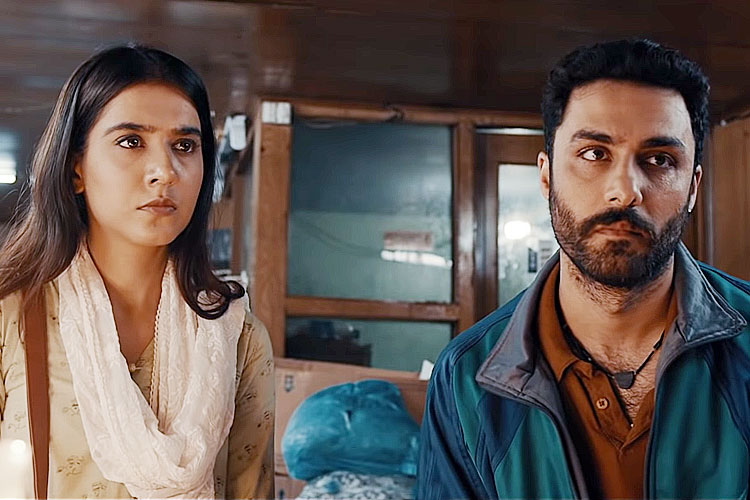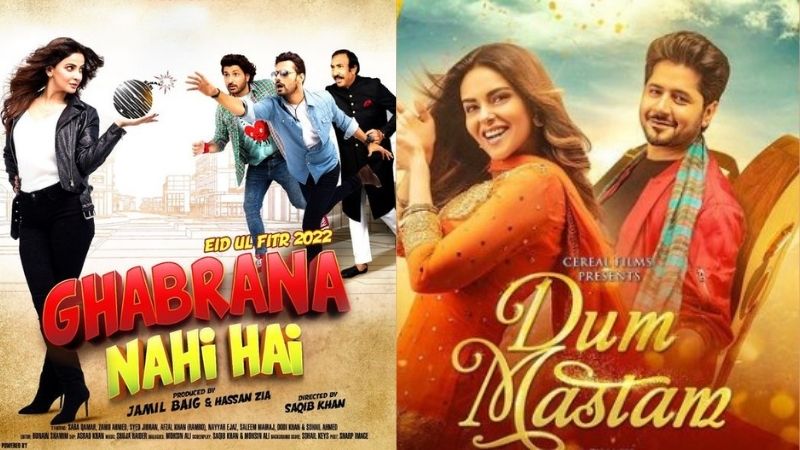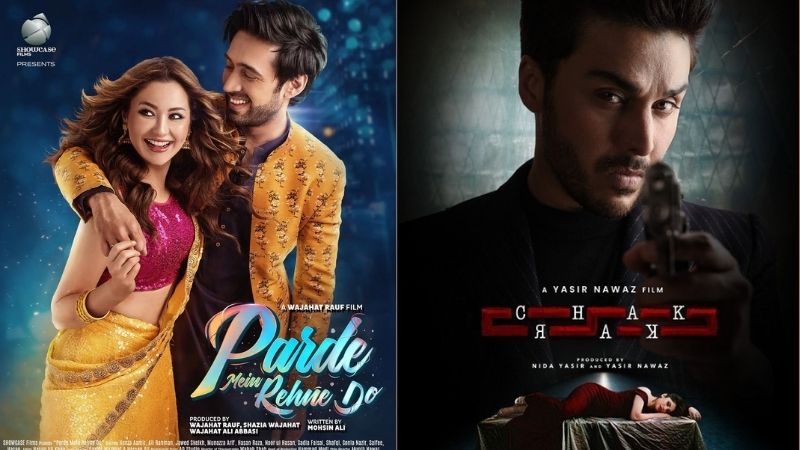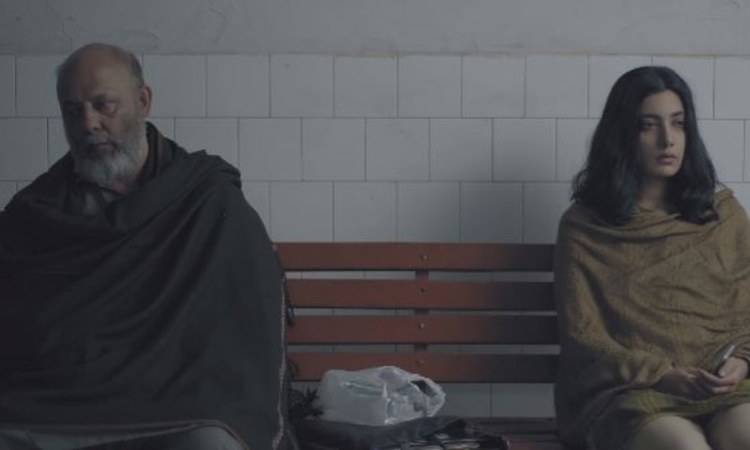Coming in on the heels of the Dr. Strange vs. Pakistani films controversy, the Sindh High Court has mandated cinema owners to give 85% of screen time to Pakistani films. This leaves 15% screen time for foreign products from Hollywood (and ostensibly Indian films if they are ever allowed to be screened).
This is clearly a win for local filmmakers whose films have been repeatedly pummeled by foreign releases like ‘Dr. Strange”, and “Spiderman: No Way Home”. With this Friday’s (May 27th) release of Top Gun: Maverick, local films again stand to lose revenue.
Allotting limited screens to the Tom Cruise starrer may increase revenue for films like “Dum Mastam”, “Ghabrana Nahi Hai” and “Chakkar”.
But here’s the real question. Will this help the Pakistani Film Industry? Or is this just a band-aid applied to a deep, festering wound?
Did Dr. Strange Steal Screen Revenue from Eid Ul Fitr Releases?
The answer is a little more complicated than yes, or no.
“Dr. Strange in the Multiverse of Madness” had been a highly anticipated film for many years. Marvel fans and general superhero fans had been waiting to book their tickets.
Those fans wouldn’t have held out on Dr. Strange to watch local films anyway. Delaying Dr. Strange an extra week wouldn’t have made much difference to the total revenues of Eid Ul Fitr releases.
Back in December, another local film, “Kahay Dil Jidhar”, clashed with “Spiderman No Way Home”. The local film had no chance since this was an international blockbuster that signaled not just a return to normalcy for theaters worldwide, but a return to the big screen for a universally beloved character.
The interest and hype generated by these films was far greater than that by local films. We know this because local films released since cinemas have opened up have not made a splash at the local box office.

Pakistani Cinema Isn’t Exciting Anymore
Ever since the release of “Waar” in 2013, Pakistani filmmakers have failed to capitalize on the successive years of momentum built up by both a renewed interest in local films and consecutive box office returns.
Even before the pandemic, there were troubling signs of the industry slowing down. In 2019, the 2 most dependable production houses; Filmwala and Six Sigma Films, didn’t come out with any new releases.
As a result, the market sank. Total box office returns were nearly half of what they had been in 2018. Interest in local products was clearly waning. The pandemic only accelerated that trend.

Shaan Shahid himself said that the local industry was “a lost cause” after the pandemic. To be clear, he didn’t mean it would never recover. He meant, it would take a long time to bounce back after the pandemic.
Take “Khel Khel Mein” which was released in November of 2021. Its subject matter was the 1971 secession of East Pakistan. It was made by the team behind Na Maloom Afraad and Actor In Law, and it starred Sajal Aly and Bilal Abbas Khan. It barely earned 5 Cr in its box office run.
Another example is “Ishrat Made in China”, a film I was looking forward to quite a lot. It was a spin-off of the brilliantly funny series “Ishrat Baji” by Mohib Mirza.

Yet, the film was a disaster at the box office. There was ostensibly no big competition, but the film failed because it didn’t generate any excitement at all.
Cinema is about escapism and delight. If Pakistani films can’t generate that, they will always be thwarted by the competition.
There are many reasons for this lack of excitement. Let’s address them one by one.
The Quality of Films
The quality of the average Pakistani film varies widely. You get your slick action thrillers like “Waar” or “Operation 021”, or your commercial masala films like “Teefa in Trouble” or “Na Maloom Afraad”. And of course, then there are serious drama or art pieces like “Laal Kabootar” and “Cake”.
Ever since “Waar” ushered in the new wave of Pakistani Cinema, audiences have been supporting local cinema in droves.
There have been big winners like “Parwaz Hai Junoon”, “Donkey King”, and “Jawani Phir Nahi Aani”, as well as smaller hits like “Karachi Se Lahore” and “Chhalaawa”. Even small films like “Manto” and “Mah-e-Mir” raked in a few crores.

Yet, the quality of the average Pakistani film when compared with those from India, or with those from Hollywood is still lacking.
Tighter screenplays, better pacing, and overall better writing is required of Pakistani films to “up our game”. The average Pakistani film has unnecessary pauses, dry stretches without much happening, and to be very honest, terrible dialogue.
Cheap shots and cliches as well as WhatsApp-forwards-level jokes count as punchlines in comedies, which are filled with vulgar humor. Dramas often have cliched dialogue which has been repurposed from older products or Bollywood films.
It’s not like we don’t have great writers and great literature right at our fingertips. Yet, the new wave of Pakistani Cinema hasn’t produced any screenplays which merit applause.
If all we can produce are low budget copies of better art, then we don’t deserve to ask for the public’s support for local cinema.

It’s been long enough.
The masses deserve better.
Lackluster Marketing
What is marketing for a Pakistani film except promotions through partnerships with national TV channels? This is hardly the 90s or the early 2000s. Today, the biggest marketing tool in the world is social media. Yet, beyond posting teasers and trailers on Facebook, Instagram, and YouTube, there is hardly any social media marketing.
There are entire teams dedicated to marketing on social media by studios abroad. Yet, Pakistani filmmakers seldom do any of that.
Yes, certain film studios have run creative marketing campaigns by touring across university campuses and colleges like the teams from “Chupan Chupai” or “Actor in Law”. However, the reach that social media provides is simply much, much greater than physical campaigns.

How many people actually knew that “Khel Khel Mein”, or “Ishrat Made in China” were even coming to cinemas when they did? This general lack of public awareness about local films beyond the Eid releases is a death blow to most films.
Current generations are growing up on social media and hardly ever tune into TV channels. Local filmmakers will lose out completely on that segment of the population if they don’t invest in digital marketing.
Eid Dangal
Most big budget films usually release in Pakistan on one of the two Eids. This makes sense since prolonged holidays provide the public with a greater chance to watch films. And at this point, there is a general expectation for films to be released on Eid.
And there lies the problem.

Eid Releases Discourage Cinema Going Culture
Hardly any big budget, or commercial films ever come out on a non-Eid day. You get the odd exception like “Teefa in Trouble” or “the Donkey King”, but in general, the rest of the year only sees low budget or somber films without much masala or commercial value.
This has accustomed the masses to subconsciously believe that Eid is the only time they will get an enjoyable experience at the theater for local films.

How is that supposed to encourage local cinema-going culture?
It only encourages a select few studios to reap the rewards of the Eid Holidays.
And then, of course, there’s the Eid Dangal.
It’s Not About Encouraging Local Cinema; It’s About Fighting Over Every Last Rupee
This year, 5 Pakistani films were released on Eid Ul Fitr. Why?
Couldn’t the producers decide to screen their films a few weeks apart and all walk away with decent earnings?
Of course not. Everyone wants the Eid profits.
That’s why I don’t buy this “encourage local cinema” argument for a second. Don’t you think releasing 5 films at once ate into each other’s profits?
It’s become customary for filmmakers to fight over every screen and every ticket to squeeze out as much profit as possible. It’s one thing to want your film to succeed, it’s another to squabble over every last rupee.

Censor Board
This is an argument that is now a cliché. The three fragmented censor boards in Pakistan operate autonomously and keep banning films that even venture one iota away from the norm. Just in 2022, 2 films have been banned from Pakistan (“Javed Iqbal”, and “I’ll Meet You There”).
Previous film bans have included “Zindagi Tamasha”, “Swaarangi”, “Durj”, and “Maalik”. While some of these saw re-releases after the censor board cleared them, others never saw the light of day.

This also discourages audiences who want to see something different on the big screen. It’s also not conducive to creating good films, because it discourages directors and producers from tackling or approaching different topics.
Ticket Prices and Cinema Closures
The average cinema ticket at a multiplex now costs 700-800 rupees. Single screen cinemas, which are sadly dying all over the world, have also been forced to raise their prices. With inflation at an all-time high, it’s a little too much to ask the public to support local cinema when they’re not sure they’re getting a good product.
What’s more, cinemas all over Pakistan are closing down. If you don’t believe me, look at the most recent numbers from the Pakistan Bureau of Statistics report on the total number of cinemas in 2019. They have been steadily closing down since 2013.
Somewhere between 70-80 cinemas remain operational throughout the country. This simply wouldn’t be the case if good-quality Pakistani films were being released throughout the year. It wouldn’t be the case if the general public was truly interested in Pakistani films.
Just this week, Capri, one of Karachi’s few remaining single screen theaters announced that it would be shutting down for the rest of the week due to low footfalls and high operation costs. It would be opening with the release of “Top Gun: Maverick”, because only then could it guarantee packed theaters.

Too Many Promises; Not Enough Results
Since the new wave of Pakistani Cinema began in 2013, there have been numerous announcements of bold, exciting film projects.
An astounding number have never been seen or heard from again. These have included partially completed films, films which had released full-fledged trailers, and others which kept being delayed over and over.
We at PakistaniCinema.Net even did a series of articles ([1], [2], [3], [4]) about Pakistani films which were never released.
Here is a list of recently announced projects on which there are no updates:
- Waseem Akram Biopic (Announced during PSL 2020)
- A Turkish Co-Production with the stars from Ertugrul, Adnan Siddiqui, and Humayun Saeed
- Zarrar (A film by Shaan Shahid which has been lying on the editing floor for years now)
- The Legend of Maula Jatt (None of us want to talk about this one; it hurts too much)
If that doesn’t disappoint you enough, here’s a nugget from the early days of the new wave.

Right after Waar, Shaan Shahid and a film production company by the name of Shiny Toy Guns announced a deal to produce multiple films every year.
They have yet to release even one.
Pakistani films keep being announced. Most don’t get off the ground. A lucky few come out with trailers and then fade into oblivion, never to be seen again.
With only promises, and very few results, how can the average Pakistani trust the average Pakistani film?



Comments
0 comments